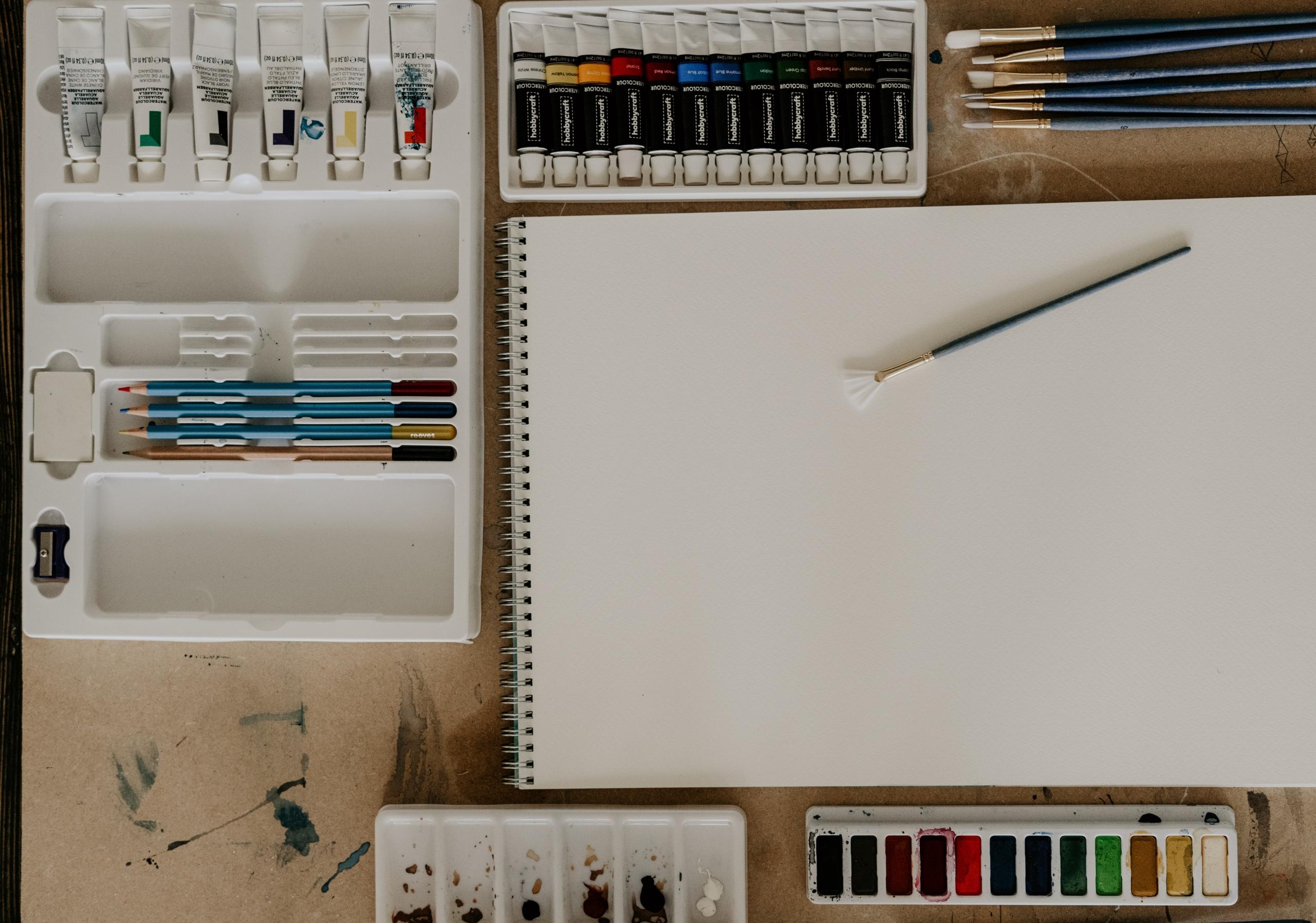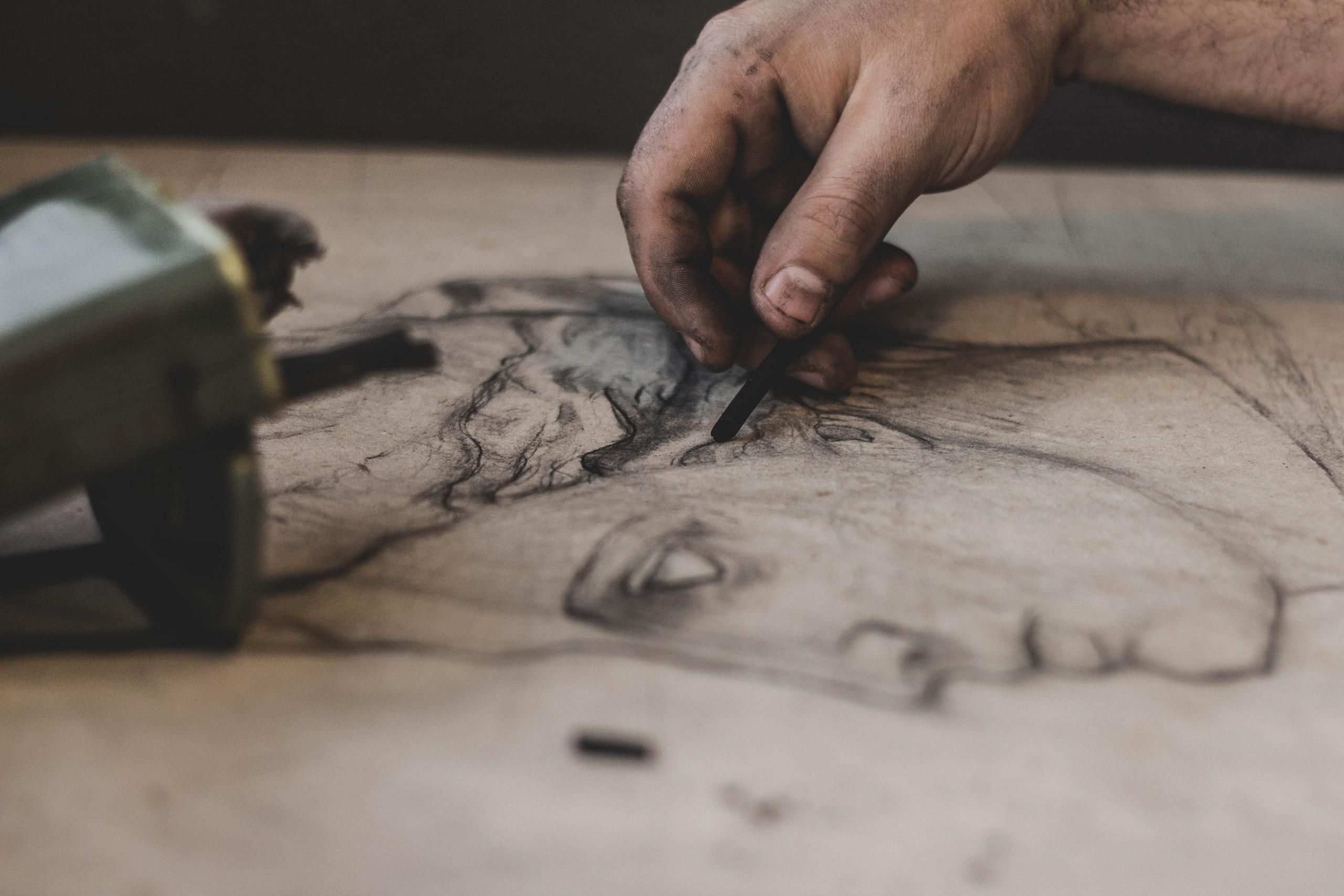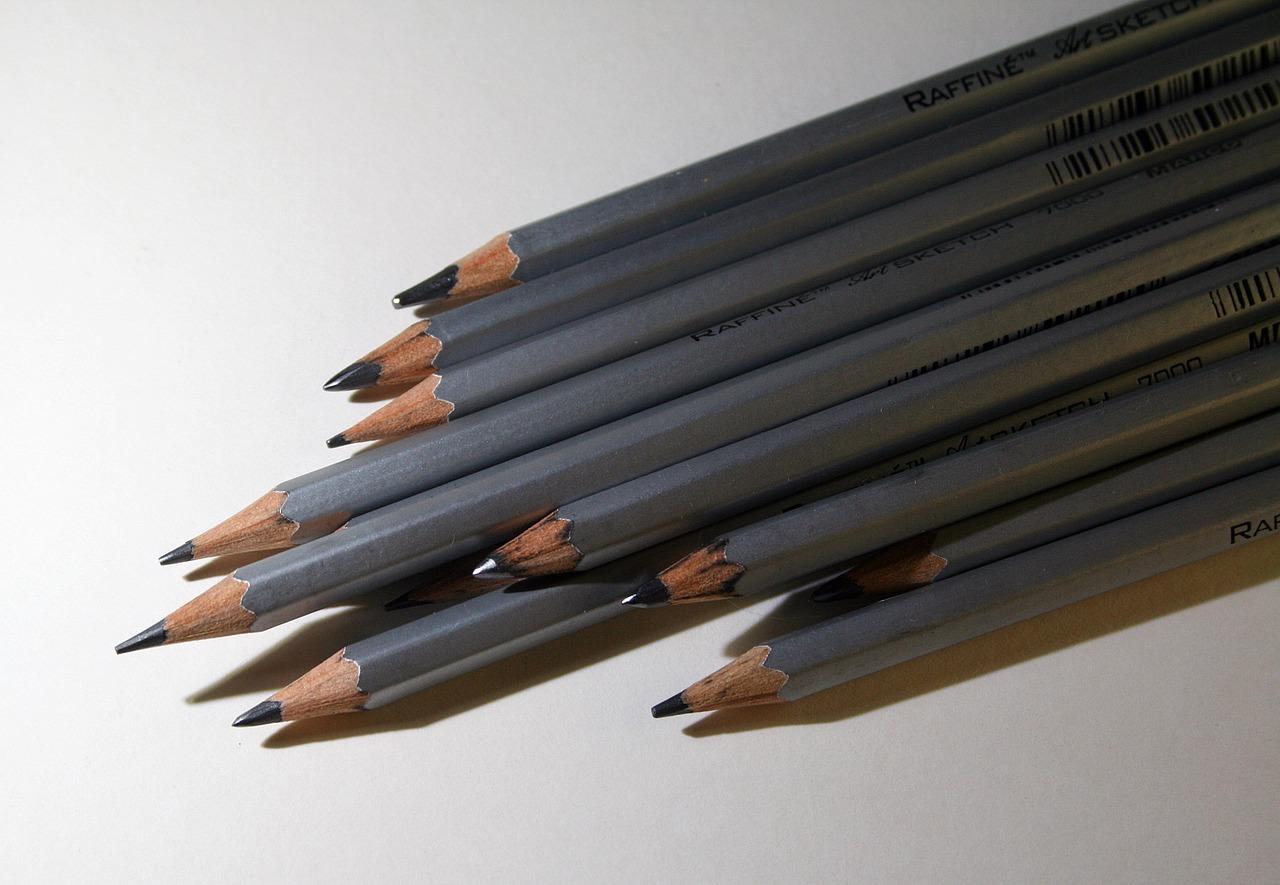It is largely accepted that Nicholas-Jacques Conté, a physicist who fought under Napoleon Bonaparte in the 17th century, created the pencil. Typically, pencils are used for writing or drawing on paper, and due to their grey color, it is simple to identify them as such. The majority of pencils have an exterior made of wood and an interior made of a thin rod. The thin rod is made of graphite, which simply means that it is the substance that is left behind after you draw something on a piece of paper or wood.
There are different varieties of pencil lead. Graphite, a non-toxic substance, makes up the interior or core of a pencil, despite the term "lead" being widely used to describe it. This is a mixture of clay and graphite in powder form.
Nicholas-Jacques Conte, a Napoleon Bonaparte's army scientist, invented the modern pencil in 1795.
The pencil may not seem like a modern technology, but it has a rich history. Its early predecessor, the stylus, was a small lead rod that the Romans used to write on wax tablets attached to wood.
Due to the range of marks that may be formed with pencils, they are the most adaptable drawing medium. Marks can be delicate and subtle or strong and assertive. While tonal shading helps define form, a few bold strokes can depict movement. A pencil's most unique feature is its ability to mix line and tone in a single drawing.

Types of Drawing Pencils
It can be confusing to decide which sort of pencil to use for your art project because consumers can purchase many different types of pencils.
The result of a drawing will not be what you had in mind if the wrong kind of pencil is utilized! The best pencil type for the drawing you want to create can be purchased once you have a better understanding of the graphite in a pencil. Much like paint brushes, there are numerous varieties of drawing and coloring pencils available.

Graphite Pencils
Graphite is a form of pure carbon. The best type of pencil to use for sketching and drawing is a graphite pencil. By reading the pencil's description, one can quickly identify the graphite pencil at the store. It is normally identified by an H or B, though occasionally both of these letters may be present. The H indicates the hardness of the graphite, and the B indicates the black tone of the graphite in the pencil.
Graphite pencils are a type of drawing and writing instrument that uses a graphite core encased in a wooden or plastic shell. The graphite core is made from a mixture of graphite and clay, and the hardness of the pencil is determined by the ratio of graphite to clay.
Graphite pencils are available in a wide range of hardness levels, from 9H (hardest) to 9B (softest). The hardness level of a pencil is indicated by a number and a letter, with H standing for "hard" and B standing for "black.
Solid Graphite Pencils
Solid graphite pencils, often known as woodless pencils, are the types of pencils most frequently used for drawing. This indicates that a solid graphite pencil has no wood finish.
Solid graphite pencils are available in a range of grades, from 9H (hardest) to 9B (softest). Harder pencils produce lighter, thinner lines, while softer pencils produce darker, thicker lines.
Liquid Graphite Pencils
This kind of pencil enables the drawer to quickly and effortlessly produce their sketches. Derivan is the name of the liquid pencil that is most in demand. It comes in a variety of tones, including grey, red, blue, and yellow. To apply the liquid pencil on the paper, you will need a brush.
Discover a world of exciting digital canvasses with the best drawing tablets in India.
Charcoal Pencils
Various styles of this kind of pencil are offered. Charcoal pencils produce rich tones and interesting contrasts. This particular pencil is excellent for writing because it can be easily removed from the paper if you make mistakes. Charcoal was the material of choice for famous artists like Michelangelo and Leonardo da Vinci when creating their artistic works.
Carbon Pencils
This particular pencil is a blend of graphite and charcoal. This pencil enables the artist to simultaneously apply texture and blending techniques to the drawing. Although the carbon pencil is a very soft and smooth type of pencil, it can often produce heavy marks that are challenging to erase.
Grease Pencils
This kind of pencil is made from colored wax that has been solidified. The grease pencil works remarkably well for marking glossy or non-porous surfaces like plastic. When labeling glassware in laboratories, this kind of pencil is frequently used. It is also used as a marking tool in construction by plumbers and handymen.
Watercolor Pencils
These pencils are commonly referred to as water-soluble pencils. Simply add a little water to the pencil when drawing to get a lovely watercolor effect. You can also use this pencil as a standard one. This method makes it very simple to combine the colors.
Learn more about mediums for drawing with drawing classes on Superprof!
Gradation of Drawing Pencils
The pencils that work best for drawing are B, HB, and F because of how relaxed they are. When looking at the types of drawing pencils, most beginners start with B pencils because they are softer and can be utilized by kids who are just learning to write or draw.
Expect the pencil to be firm and leave less graphite on the paper when using one that is merely marked with an H. As a result, the drawing will be considerably lighter with less graphite. Because B pencils are softer than H pencils and naturally leave more graphite on the paper, your pencil lines will appear darker when you draw with them.

If a pencil has an F on it, it has a very fine point. This kind of pencil is quite harsh and is typically regarded as being unsuitable for drawing. Therefore, it is safe to assume that the harder the pencil, the more H's will show on the side of the pencil type. A 4H pencil, for example, will be significantly lighter and tougher than a 2H pencil. The toughest and lightest type of pencil you will find is the 9H.
Discover how to effectively use your pencils with drawing classes on Superprof.
The HB pencil, which has a medium degree of hardness, is what the more experienced artist will seek out. One of the best types of sketching pencils available is the HB. Grades 2B through 8B are likely to be used by artists who wish to convey more emotion in their sketches since they add contrast.
Consider utilizing a firm sort of pencil when practicing the art of technical drawing. The lines of drawing pencils in grades H, 2H, and 6H are typically more grey than black and less prone to smudge. It should be noted, nevertheless, that applying too much downward pressure to the paper could leave pressure marks on it.
The table below provides an overview of pencil grades, from the hardest and lightest (H grades) to the softest and darkest (B grades), along with their typical applications.
| Pencil Grade | Description | Uses |
|---|---|---|
| 9H to 7H | Extremely hard and light | Technical drawings, fine details, light outlines, and preliminary sketches. |
| 6H to 4H | Very hard and light | Architectural sketches, detailed line work, and precise technical illustrations. |
| 3H to H | Hard with slightly darker tones | Drafting, clean technical drawings, and light shading. |
| F | Firm | General-purpose sketching and writing with moderate line density. |
| HB | Medium | Everyday writing, sketching, and moderate shading; good for beginners. |
| B | Slightly soft | Soft sketching, light shading, and adding texture. |
| 2B | Soft | General shading, sketching, and adding light to mid-tone values. |
| 3B to 4B | Softer with darker lines | Illustrations, deeper shading, and expressive sketches. |
| 5B to 6B | Very soft | Dark shading, bold lines, and creating contrast in drawings. |
| 7B to 9B | Extremely soft and dark | Deep shadows, rich dark tones, and bold artistic effects for expressive artworks. |
The drawing will be lighter if it is done with a firmer pencil, and darker if it is done with a softer pencil. The most important rule to remember when beginning to sketch is that practice makes perfect. To start sketching, it is advised that you are familiar with your tools, including the kind of pencil and paper you will be using. Always use broader forms at the beginning of your sketch and keep in mind that the finer details will be added afterwards.
Best Drawing Pencil Brands in India [2024]
When choosing a drawing pencil set to buy for beginners, look for features like lead quality, shape, design, sharpening, and wood quality. These are the distinctive features that set apart the best from the rest. Check out our top picks in drawing pencils in India.
Faber Castell
One of the most well-known stationery products companies in the world, Faber Castell offers a wide variety of aesthetically pleasing and affordable pencils for drawing. Faber Castell graphite or drawing pencils are an excellent choice for a vibrant variety of black colors in various sorts of artwork. These pencils enable artists to shade large pages uniformly and without difficulty. For the ideal varnish application and gold stamping, use the Faber-Castell Castell 9000 Pencil Set. They provide pencils that are simple to sharpen and have a precise blending effect for the surface.
Apsara
The biggest stationery company in India, Apsara creates simple and attractive art pencils. Get Apsara pencils for the glossier finish. The 0.5 mm graphite pencils feature high-quality wood and graphite for precise sketching. The pencils' sturdy graphite base supports several features and capabilities.
Nataraj
Hindustan Pencil Group, which produces, exports, and trades a variety of extra-large, sharp pencils for artists and students, is one of the top pencil brands in India. Their pencils have a common lead core and are renowned for being used in nearly every home. Nataraj drawing pencils are durable, with more blackness, crimson, and high-quality graphite. For a firm grip, the sketching pencil is manufactured with wood of the highest quality. The highly bonded lead prevents the pencils from breaking easily.
Camlin
In terms of dependability and quality of sharpness, Camlin Pencils compete with Apsara and Nataraj pencils. Durability and premium lead are this pencil's secret weapons. They never skimp on the materials or any other design elements, providing distinctive pencils to make your sketching fluid and stylish. Using their pencils to sketch or draw is a wonderful experience. They also offer quality-graded erasers and sharpeners. The pencils have glossy exteriors and come in a variety of hues.
Staedtler
The brainchild of Johann Sebastian Staedtler in 1835, Staedtler is synonymous with superior-quality drawing pencils for sketching, drawing on paper, and taking notes. This can be the perfect pencil for artists, students, and design professionals due to the variety of pencils that offer extreme durability, break resistance, sharp lead, and long performance.

Many users have a propensity to push their pencils excessively firmly in an effort to boost intensity, which could harm the paper. Therefore, it's crucial to choose the right pencil for the desired result. Grades from 3B and up should be used for deep, dark shading. Use a grade around the 2H mark for a very light mark, such as when you are suggesting an outline for a watercolor. To add depth and intrigue to a drawing, use a variety of grades to offer the drawing a range of mark-making.
Find out which pencils suit your style most when you use Superprof to take drawing classes with a qualified tutor.
Best Pencil Brands Chart
| Brand | Best Pencils | Features |
|---|---|---|
| Faber-Castell | Grip 2001, 9000 Graphite Series | Known for durability, smooth shading, and eco-friendly design. Ideal for beginners to professionals. |
| Staedtler | Mars Lumograph, Noris Graphite | High-quality leads, minimal breakage, and a wide range of grades for detailed and bold artworks. |
| Camlin | Camlin Kokuyo Graphite Pencils | Affordable, reliable for students, and excellent for general drawing and shading. |
| Derwent | Graphic Pencils, Studio Pencils | Premium quality, smooth application, suitable for fine details and professional artwork. |
| Artline | Supreme Sketch Pencils | Offers a good range of tones, smooth application, ideal for hobbyists and semi-professionals. |
| Apsara | Platinum Extra Dark, Scholar Pencils | Budget-friendly, great for beginners, known for consistent dark lines and smooth writing. |
| Cretacolor | Graphite Artist Pencils | High-grade Austrian pencils for detailed shading and professional drawings. |
| Koh-I-Noor | 1500 Graphite Pencil Series | Smooth, high-pigment pencils ideal for realistic shading and technical drawing. |
| Prismacolor | Ebony Graphite Pencils | Super dark and smooth, perfect for deep shadows and expressive sketching. |
| Doms | Zoom Ultimate Dark, X1 Pencils | Affordable, dark, and smooth pencils, popular among students and hobbyists. |
Recommendations:
- For Beginners: Apsara Platinum, Camlin Kokuyo, and Doms X1 are budget-friendly and easy to use.
- For Professionals: Staedtler Mars Lumograph, Faber-Castell 9000, and Derwent Graphic offer superior quality and performance.
- For Hobbyists: Artline Supreme and Faber-Castell Grip 2001 provide a balance of quality and affordability.
Best Pencils For Illustrators
For illustrators, choosing the right pencils is crucial as it can greatly influence the quality and style of their artwork. The best pencils for illustrators often depend on personal preferences and the specific techniques they use. Here are some popular types of pencils that illustrators commonly use:
- Graphite Pencils: Graphite pencils are the most traditional and widely used pencils for illustration. They come in various grades, ranging from 9H (hardest) to 9B (softest). Harder pencils (H-grade) produce lighter and finer lines, while softer pencils (B-grade) create darker and broader lines. HB and 2B pencils are common choices for general illustration work.
- Mechanical Pencils: Mechanical pencils are precise and convenient for illustrators who prefer a consistent line width. They use thin lead refills, typically 0.3mm to 0.7mm, which can be easily replaced. These pencils are great for detailed work and technical illustrations.
- Colored Pencils: Colored pencils are excellent for adding color and vibrancy to illustrations. They come in a wide range of colors and can be used for both line work and shading. High-quality colored pencils with strong pigment are preferred for professional illustration work.
- Watercolor Pencils: Watercolor pencils combine the characteristics of colored pencils and watercolors. They can be used dry for regular colored pencil work and, when water is applied with a brush, the colors blend and create a watercolor effect.
- Charcoal Pencils: Charcoal pencils are great for creating expressive and dramatic illustrations. They produce rich, bold lines and are especially popular for sketches and life drawings.
- Graphite Sticks: Graphite sticks are versatile tools that allow illustrators to create both fine lines and broad strokes. They come in various degrees of softness, similar to graphite pencils, and are well-suited for expressive and textured illustrations.
- Carbon Pencils: Carbon pencils offer deep black lines that are smooth and consistent. They are great for high-contrast illustrations and have minimal smudging compared to regular graphite pencils.
- Mechanical Colored Pencils: These are mechanical pencils that use colored lead refills. They are ideal for illustrators who want precision and control when working with colors.
- Pastel Pencils: Pastel pencils are perfect for soft and blendable illustrations. They provide a painterly effect with the convenience of a pencil.
Master all sorts of sketching and drawing with drawing classes on Superprof!
When selecting pencils, it's essential to consider factors like the type of artwork you create, the level of detail you need, and your preferred drawing style. It's also a good idea to experiment with different pencils to find the ones that best suit your needs and artistic vision.
Utilizing the right surface is also crucial. On textured paper, such as watercolor and Ingres papers, as well as smooth media, like Bristol board, pencils can be used. However, it should be remembered that the varied grades will produce distinct effects on the various surfaces. Try different combinations of grades and papers to determine which ones will yield the desired outcomes the best. With the right equipment, you can even collaborate with other artists around the world!
















